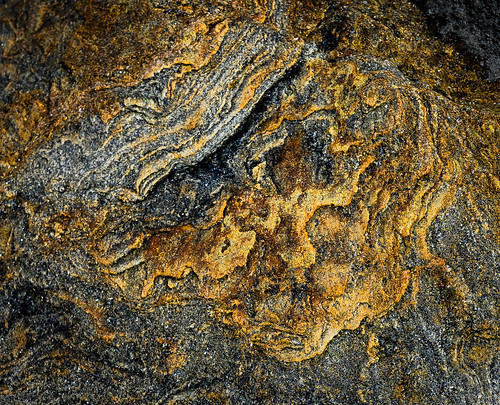
22x18
Walking on a beach or an outcrop or a scatter of till, I pick up a rock or isolate a lithic element in the camera's viewfinder. My attention is drawn by appreciative recognition of an abstract pattern or the elements of an imagined face. I am interacting with entities of vast age, but applying to them analyses and judgements of my own human time scale and aesthetic principles.
Perhaps the simplest explanation for what I imagine that I see in my rock photographs is that I am projecting onto patterns in rocks what I have some visual memory of or eidetic association with. Thus, Bright Phoebus only occurred to me while I was processing the image from which it came, and only after I had rotated the frame 90° counterclockwise and increased contrast and saturation:

A face appeared where I hadn't noticed a face, and when I isolated it with a judicious crop, the result seemed very like an anthropomorphic representation of the Sun emerging from a cloud. "Bright Phoebus" I thought, remembering the album cover artwork from Lal Waterson's album of that name:
(and if that doesn't melt your heart...)
(see Lal Waterson's backstory)
What I've been doing with rocks, and particularly with rock surfaces, is akin to landscape photography, but mostly without sky as an element. Generally the images are mostly concerned with patterns in the fine structures of rock, many the consequences of erosion and other more clastic processes that produce the breakup of the unity of the parent rock. In New England glacial processes are always a consideration too.
When I'm out photographing, the initial attempt is to explore the fine structure and design of the rocks I encounter, typically from a distance of 2-3 feet. More and more I "see" Creatures as I'm exploring an area of rock, but sometimes it's not until the processing phase that Creatures make their appearance.